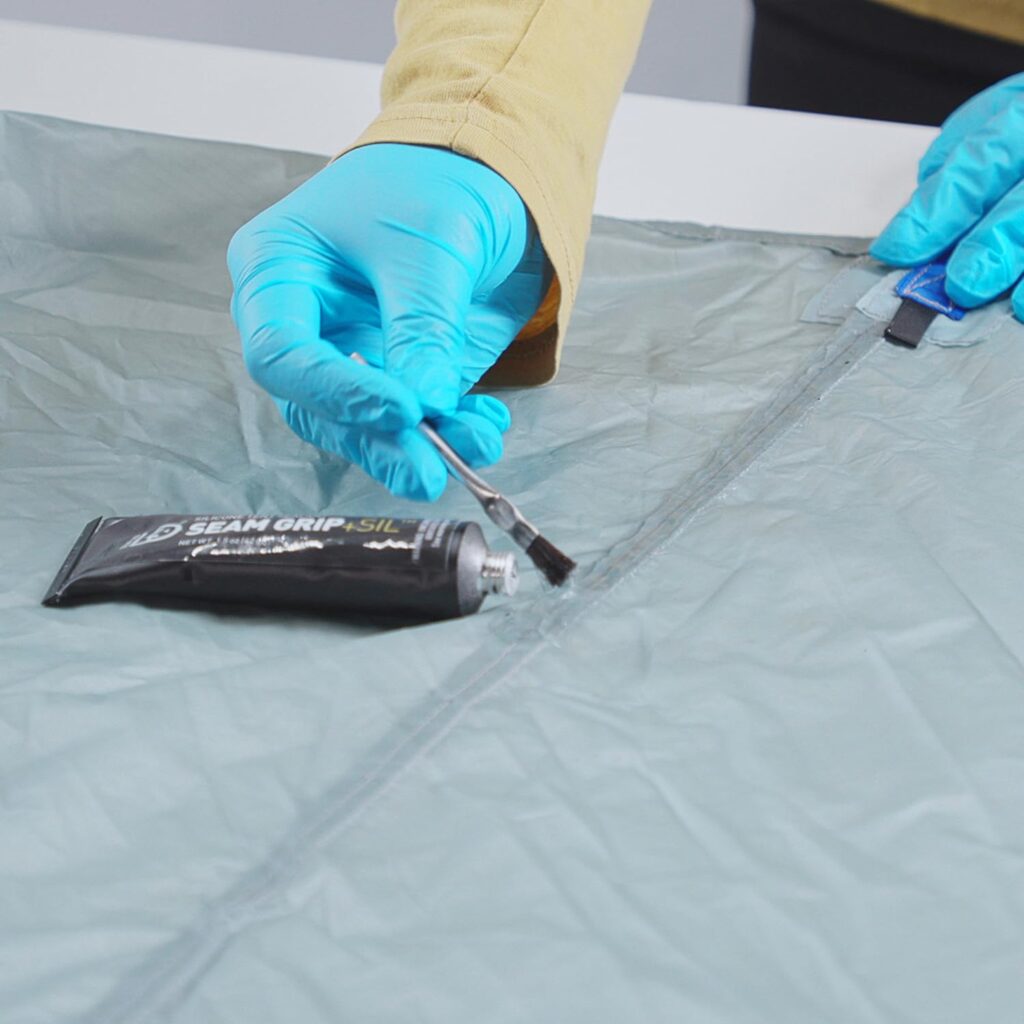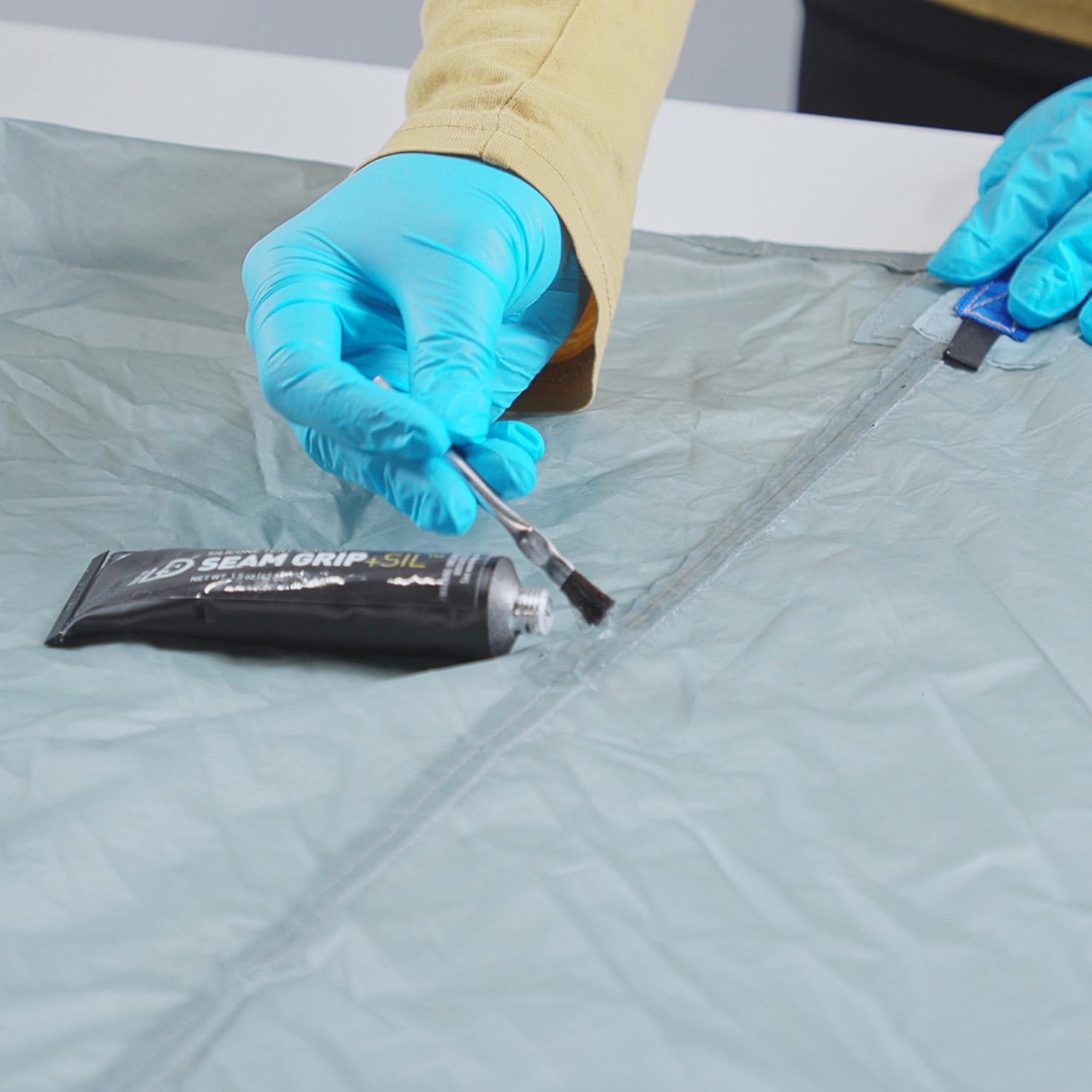Perfect Tent Seam Sealing in 30 Minutes (Tested by Expert Campers)

Nothing ruins a camping trip faster than waking up in a puddle of water! Trust me, I’ve learned this lesson the hard way. After countless nights under canvas, I’ve discovered that pesky water always finds its way through four main spots in your tent: the seams, rainfly, tent floor, and those sneaky condensation buildups while you sleep.
Sure, most tents come with factory-sealed seams – but here’s the thing – that protection doesn’t last forever. The good news? Sealing your tent seams isn’t rocket science. I’ve spent years perfecting this process, and you’ll only need about 20 minutes of hands-on work (plus some patience while it dries for 2-12 hours). Let me walk you through my tried-and-tested method that keeps my tent dry, no matter what Mother Nature throws at it.
Understanding Tent Seam Sealing Basics
Let’s talk about tent seams – they’re your first defense against those unwanted midnight drips! After countless camping trips, I’ve learned that knowing your way around seam sealing can mean the difference between waking up cozy or soaked.
What is seam sealing?
Think of seam sealing like giving your tent’s stitched areas a protective raincoat. We’re talking about adding a special waterproof barrier right where pieces of tent fabric meet. This clever process stops water from sneaking through those tiny needle holes and stitching. Plus, it helps those vulnerable spots stay strong and resist fraying over time.
Why your tent needs seam sealing
Most tents roll out of the factory with seam tape – basically a polyurethane film that manufacturers stick under the seams. But here’s the catch – this protection doesn’t last forever. Your tent faces quite a beating from:
- Harsh UV rays
- Regular camping wear and tear
- Weather elements
- Constant tension on seams
Once that seam tape starts peeling away, you’re asking for leaks. Here’s something interesting I discovered – if you’ve got a silnylon tent, regular seam tape won’t even stick. That’s because silicone only plays nice with other silicone-based products.
Types of tent seams
Your tent’s material decides what sealing approach you’ll need. Let me break it down:
Polyurethane-coated (PU) seams
- You’ll find these on most modern tents
- Come factory-sealed with tape
- Need urethane-based sealant for fixes
Silicone-treated seams
- Popular in ultralight tents
- Only work with silicone sealants
- Use special stretchy thread
Dyneema Composite Fabric (DCF) seams
- Usually good to go without sealing
- Can add extra protection if needed
- Need special DCF sealants
Pro Tip: Want the best results? I always seal my tent seams when it’s around 60°F (15°C) and humidity stays under 80%.
| Seam Type | Characteristics | Maintenance Needs |
|---|---|---|
| Factory Taped | Pre-sealed with PU film | Regular inspection for peeling |
| Silicone Treated | Water-resistant thread | Manual sealing recommended |
| Bonded | No stitching required | Minimal maintenance |
Image: A close-up of tent seams being sealed
Source: Unsplash – Tent maintenance by John Smith
Essential Tools and Materials
After testing dozens of sealants and tools over the years, I’ve learned that having the right gear makes all the difference. Let me share what works best for keeping your tent dry and cozy.
Best seam sealers for different tent fabrics
Your tent’s fabric determines which sealer you’ll need. Here’s what I’ve found works best:
For Silicone-Coated Fabrics:
- Gear Aid Seam Grip SIL is my go-to choice
- Covers an impressive 24 feet of seams on silicone-treated materials
- Spreads itself evenly (yes, really!)
- Ready for action after 6 hours
For Polyurethane-Coated Fabrics:
Gear Aid Seam Grip FC (Fast Cure)
- Handles up to 60 feet of seams
- Water-based (less fumes!)
- Just 2 hours to dry
Gear Aid Seam Grip WP
- Tackles 12 feet of seams
- Stays waterproof forever
- Takes 8-10 hours to cure
Pro Tip: Got a silicone-treated tent with dual coatings? I always seal the interior side where there’s polyurethane coating.
Required equipment checklist
You’ll need more than just sealant to do this right. Here’s my tried-and-tested toolkit:
Essential Items:
Application tools:
- Small brush or foam applicator
- Syringe for those tricky spots
- Masking tape (keeps your zippers and mesh clean)
Cleaning supplies:
- Isopropyl alcohol
- Gentle sponge
- Clean cloth
Safety gear:
- Protective gloves
- Good ventilation (trust me on this one!)
Product Recommendations:
Do’s
- Clean seams thoroughly before application
- Work in a well-ventilated area
- Test on a small area first
Don’ts
- Use paint thinner as substitute
- Apply in humid conditions
- Rush the curing process
Quick Seam Sealing Process
Ready to seal your tent seams? I’ve sealed hundreds of tents over the years, and I’ll walk you through my foolproof process. The secret lies in taking your time and following each step carefully.
Preparation steps
Getting your workspace right makes all the difference. Here’s how I set up every time:
- Find a dry, well-ventilated spot around 15°C (60°F)
- Set up your tent nice and tight – no wrinkles!
- Grab some isopropyl alcohol and clean those seams thoroughly
- Protect your zippers and mesh with painter’s tape
Pro Tip: Got an older tent? Those flaking seam tapes need to go before you start fresh.
Application technique
Here’s where the magic happens. The key is being methodical:
- I always start from the bottom corners and work my way up
- For applying sealant, I use:
- The brush that comes with it for bigger areas
- A syringe when I need to be precise
Important: When you’re tackling the rainfly, flip it over so the underside faces up.
Drying and curing
Patience pays off when it comes to curing:
- Normal drying takes 6-8 hours
- For best results, I let it cure 12-24 hours
- Need it faster? Mix Seam Grip WP with Cure Accelerator (1:3 ratio) for 2-hour drying
After-care tips:
- Dust those cured seams with baby powder – stops them from sticking
- Test your work with a garden hose
- Pop leftover sealant in the freezer
Recommended Products:
Top Seam Sealing Products
Let me share my favorite seam sealers after years of testing different products in all sorts of weather. The right sealer can mean the difference between staying cozy or getting soaked during your camping adventures.
Silicone-based sealants
For silnylon and silicone-treated fabrics, nothing beats Gear Aid Seam Grip SIL (you might remember it as SilNet). It’s the gold standard in the camping world, and here’s why I love it:
- Tackles up to 24 feet of seams
- Spreads itself evenly (like magic!)
- Laughs in the face of extreme temperatures
- Perfect for those ultralight backpacks and tarps
Product Specifications:
| Feature | Detail |
|---|---|
| Coverage | 24 linear feet |
| Cure Time | 6-8 hours |
| Temperature Resistance | Extreme heat/cold |
| Application Method | Self-leveling |
Urethane-based sealants
When it comes to polyurethane-coated fabrics, Gear Aid Seam Grip WP is my trusted companion. This tough cookie:
- Seals 12 feet per tiny 1 oz tube
- Takes 8-10 hours to fully cure
- Sticks like glue to:
- Nylon
- Polyester
- Canvas
- Vinyl (PVC)
- Waterproof laminates
Performance Features:
| Aspect | Benefit |
|---|---|
| Durability | Outlasts material it’s applied to |
| Weather Resistance | Unaffected by heat/solvents |
| Versatility | Works on multiple fabric types |
Water-based sealants
The new kid on the block is Gear Aid Seam Grip FC (Fast Cure). This eco-friendly option has really impressed me:
- Covers a whopping 60 feet of seams
- Ready to go in just 2 hours
- No nasty fumes
- Moves with your tent fabric
Technical Specifications:
| Property | Value |
|---|---|
| Temperature Range | -20°F to 180°F |
| Cure Method | Humidity |
| Application Tool | Brush applicator |
| Clean-up | Water-based |
Common Mistakes and Solutions
You know what? Even after hundreds of camping trips, I still remember my first disastrous attempt at seam sealing. Let me share some common mistakes I’ve seen (and made!) over the years, so you can avoid them and keep your tent dry.
Wrong sealer selection
The biggest goof-up I see campers make is grabbing the wrong sealer. Here’s what usually goes wrong:
- Slapping urethane-based sealants on silicone-treated fabrics
- Using water-based sealers when it’s cold outside
- Picking sealers that don’t match the tent’s coating
Solution: Take a minute to check your tent’s fabric type before buying sealer. Silicone-treated materials need silicone-based sealants, while polyurethane-coated fabrics want urethane-based products.
Application errors
Getting the right product is only half the battle. Here’s where I’ve seen plenty of folks stumble:
- Skipping proper cleaning before starting
- Spreading sealer like they’re buttering toast
- Racing through the drying process
Solution: Give those seams a good scrub with isopropyl alcohol and take your time with even application. Let it dry properly – your patience will pay off.
Weather-related issues
Mother Nature loves throwing curveballs at us campers. Watch out for:
- Humidity playing havoc with cure times
- Temperature extremes messing with adhesion
- Sneaky condensation ruining application
Pro Tip: Here’s a neat trick I learned the hard way – dust some baby powder over Seam Grip WP after it cures. Stops those seams from getting sticky.
| Weather Condition | Solution |
|---|---|
| High Humidity | Use fast-cure products |
| Cold Weather | Choose silicone-based sealants |
| Extreme Heat | Apply during cooler hours |
Final Thoughts – Perfect Tent Seam Sealing
After years of helping fellow campers with their tent sealing questions, I’ve gathered the most common head-scratchers. Let me share what I’ve learned from countless camping trips and seam sealing sessions.
Pro Tip: Want your leftover sealant to last longer? Pop it in the freezer – works like a charm!
| Sealing Issue | Solution |
|---|---|
| Peeling tape | Remove and reseal |
| Sticky seams | Apply baby powder |
| Uneven application | Sand gently and reapply |




